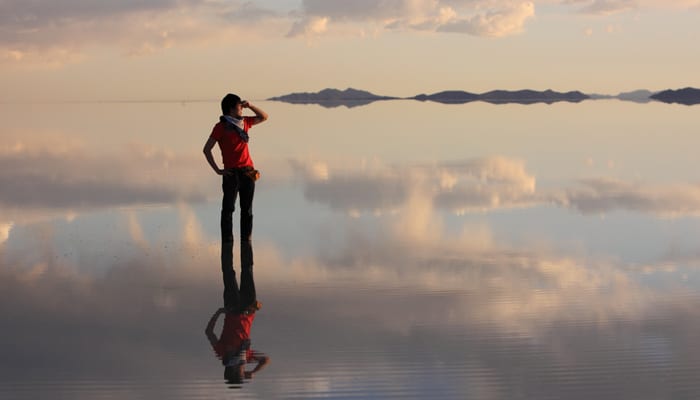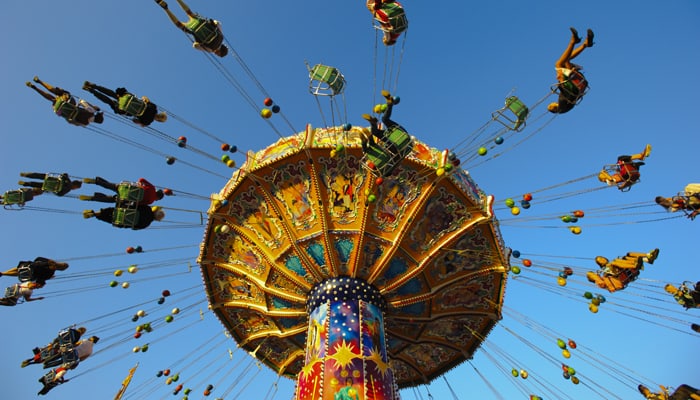Category: Blog
Blog: Exploring the Unknown: Dreams
By Isa Gucciardi, Ph.D.
I have been a guest lecturer in the Integral Medicine class at the University of California at Berkeley every year for the last ten years or so. Sometimes I lecture on alternative therapies like Depth Hypnosis, and sometimes on methods of healing that are found in shamanic cultures. During the past few years’ lectures, the students have really perked up when I have talked about the way in which dreams are viewed in shamanic cultures. The students are always surprised to hear someone actually talk about their dreams as being an important aspect of their experience.
Blog: Ask Isa: Aging and Radical Self-Acceptance
By Isa Gucciardi, Ph.D.
Question: When it comes to maintaining one’s aging body, where is the line between self-love and self-loathing?
I don’t consider maintaining your body an act of self-loathing unless you are doing it in response to some kind of negative view or thinking. You have to look at the motivation behind what you are calling maintenance.
Blog: The Two Truths: Finding Meaning in Difficult Situations
By Isa Gucciardi, Ph.D.
In a recent dinner conversation with friends, the Buddhist concept of the Two Truths came up. In Buddhist philosophy, the Two Truths offers an explanation of the nature of reality. The discussion wound around to how I introduced adapted elements of the Two Truths to students in the Depth Hypnosis Foundation Course. This adaptation is a bit like an overview, making the concept a little easier to grasp and apply in a Western context.
Blog: Ask Isa: Vulnerability
By Isa Gucciardi, Ph.D.
Question: You have said that there is power in the vulnerability inherent in major life transitions but I have a hard time understanding how that is possible. Would you explain this more?
Blog: Ask Isa: Overcoming Guilt as a Reaction to the State of the World
By Isa Gucciardi, Ph.D.
Question: I feel very guilty about the state of the world and my relatively good life. I have so much and others are in such pain and have so little. My response is to over-give in an effort to help, but it never seems to be enough and I just end up feeling worse about myself and about the state of the world. How do you live with the knowledge that so much is wrong in the world and then not do something about it?
Blog: Journey On It: More on Healing with the Journey
By Isa Gucciardi, Ph.D.
The shamanic journey works on the level of epiphany. Similar to muscle memory when we learn to hit a tennis ball or ride a bike, the realization that comes in the journey is beyond the rational mind. It is beyond thought. When we learn something at this level, it stays with us and we have the opportunity to change long held patterns of behavior, and shed ways of being that no longer serve us.
Blog: Journey On It: Journeying for Healing
By Isa Gucciardi, Ph.D.
In a traditional setting, the shaman would align with the forces of the Earth in order to bring organization and guidance to human affairs. People today are so disconnected from the natural world and from their own inner worlds that the spirit of inquiry for the modern journeyer needs to focus on reconnection. In my Shamanic Journey workshops, I help students address issues of imbalance as they work with the journey to deepen their connection to their own inner guidance and personal power.
Blog: Journey On It: Inner Guidance
By Isa Gucciardi, Ph.D.
In traditional shamanic practice, the journey was taken by the shaman to understand and connect with the power of the Earth. The shaman became empowered through the process of this quest and used this power to aid the community through ceremony, healing, and divination. Shamans use a repetitive sound to alter consciousness and then focus their attention inward. The most common sounds used for the shamanic journey are drums and rattles.
Blog: Journey On It: Reconnecting with the Earth’s Wisdom
By Isa Gucciardi, Ph.D.
In societies whose stories and wisdom emerge from the Earth, the Earth was often understood to have two important aspects to it: the unseen and seen. This meant that every tree had its physical aspect in the form of the tree that we can see with our five senses. But it also had another, more hidden one. This aspect is often referred to as the ‘spirit’ of the tree.
Blog: Journey On It: Finding Our Way Home
By Isa Gucciardi, Ph.D.
The Journey is a process of going inward that helps us discover who we are and what our relationship is to the world around us. Seekers trying to understand the mystery of their experience can be found in every culture that has existed on the planet. Different societies have different names for these seekers – medicine men, medicine women, the ones who cure, the ones who know. Cultures with these kinds of references for their seekers tend to be cultures that exist closer to the earth.
In cultures whose traditions are closely tied to the natural rhythms and processes of the Earth, the Earth itself is the place where all inquiry begins and ends. In order to know when to plant successful crops, its rhythms must be measured. In order to measure its rhythms, seekers have looked skyward to measure the Earth’s rhythms against the patterns of the sky.
Blog: Finding Power in Powerlessness
By Isa Gucciardi, Ph.D.
The roots of anger, and indeed, the roots of many potentially destructive emotions, lie in powerlessness. Most people would not choose destructive emotions as a way to gain control over circumstances if they could learn to tolerate not having control over the situations around them.
It is important to be gentle with yourself and have self-compassion as you learn to be present with your anger. It is easier to be compassionate with yourself if you can trust your ability to take responsibility for any way you may have harmed yourself or another with anger. In this way, you won’t look for the easy “out,” but instead learn everything you have to learn from the way you have related to your anger. In this way, you can understand the roots of your anger more fully, make amends where needed, and honor the information contained in your anger.
Blog: Listening to Anger
By Isa Gucciardi, Ph.D.
There is a Mahayana Buddhist idea that everything in our experience is part of the path to enlightenment. This is very important to remember when we find ourselves wanting to avoid relating to others because it seems too overwhelming. We must remember that everything that comes up in our experience is workable.
Blog: Having Compassion for Yourself and Others
By Isa Gucciardi, Ph.D.
How attentively do you listen to yourself? Are you engaging in negative self-talk? Are you seeing your own self-talk reflected in how you talk to others? Are others having a reaction? Is it hard to ignore or deny that reaction?
Here’s a hint: There is probably a part of yourself that is hearing that negative self-talk and having a reaction similar to those around you who you might be treating in the same way. This is one of many benefits of being in relationship. We can learn about ourselves and see ourselves through the lens of relationship.
Blog: Being Present in Relationship
By Isa Gucciardi, Ph.D.
It is a common tendency to think that if we just ignore a problem, it will either go away on its own or we won’t feel its effect. Ignoring our problems leads to confusion about what is real and what is true. Unfortunately, one of the most common responses to this state of confusion is to go into denial about the fact that the effect of not being present is causing a problem.
Blog: Interdependence
By Isa Gucciardi, Ph.D.
In a recent podcast, Robert Thurman, noted Buddhist scholar, asked, “What would you do if you realized that you would never be able to get off the subway car you were on this morning – that you were going to be with those people for infinity?”
For one thing, it would probably change the way we viewed those people. If we are all in a subway car together cruising through eternity, it would probably be a good idea to start figuring out how to get along.
I have spent many years trying to help people figure out how to get along through my Depth Hypnosis practice and teaching. Mostly I try to help people figure out how to get along with themselves – because you really can’t get along with anyone else until you have yourself figured out.















